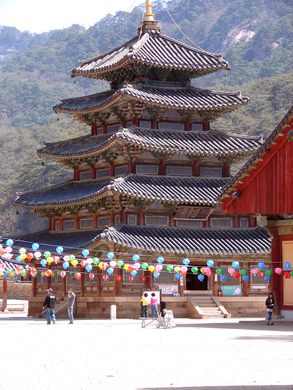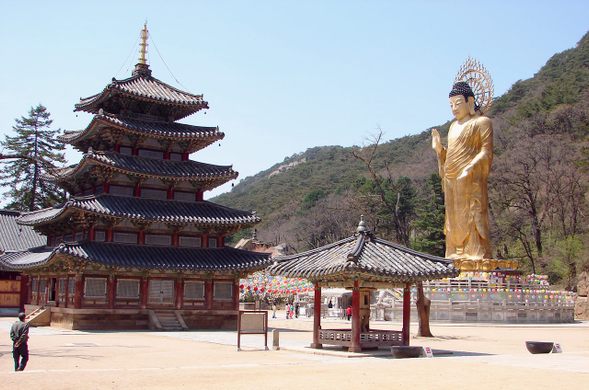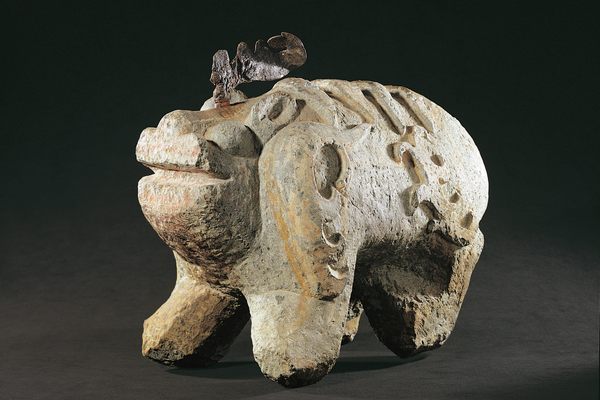Palsangjeon
The only wooden pagoda remaining in South Korea is part of a Buddhist temple that was established in the year 553.
Initially built in 553, this wooden pagoda is thought to be both the oldest and tallest building of its kind in Korea. It is also the only pagoda in Korea that has kept its original appearance. Its name is Palsangjeon, which means “Hall of Eight Pictures,” and it is one of the buildings in Beopjusa, a Buddhist temple complex located within South Korea’s Songnisan National Park.
The hall gets its name from the Palsang, a series of eight murals depicting the life of Sakyamuni, the founder of Buddhism. These murals depict the distinct phases in the Buddha’s life, from birth into adulthood and then achieving enlightenment and entering Nirvana. In addition to the painted panels, there are four statues of the Sakyamuni Buddha, a sarira containing relics of the Buddha or another holy person, a shrine for the Buddha, and an area for meditation inside Palsangjeon.
Palsangjeon stands over 22 meters (74 feet) tall and sits atop a stone platform with central steps and entrance doors in each of the four cardinal directions. Many of the historical records have been lost to time, but two inscriptions found on a sarira casket and a part of the roof indicate that Beopjusa’s Palsangjeon was built in 553. However, like many other wooden buildings, it was destroyed by the Japanese during the Seven Year War, with rebuilding taking place in 1605.
Due to its unique design and historical significance, Palsangjeon was designated National Treasure of Korea #55 on December 20, 1962.
Know Before You Go
Two further National Treasures of Korea can be found at this site: Beopjusa Seogyeonji (National Treasure #64) and Ssangsajaseokdeung (National Treasure #5). Beopjusa is also home to a number of tangible cultural heritage items and other miscellaneous treasures.
To get to Beopjusa get off at Daejeon KTX station and go to Daejeon Terminal Complex. Then take an intercity bus for Songnisan.
Plan Your Trip
The Atlas Obscura Podcast is Back!





















Follow us on Twitter to get the latest on the world's hidden wonders.
Like us on Facebook to get the latest on the world's hidden wonders.
Follow us on Twitter Like us on Facebook